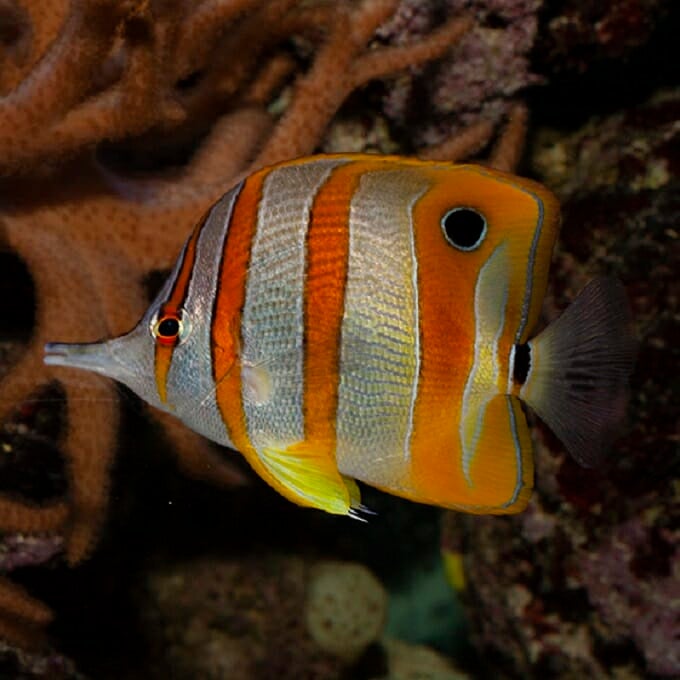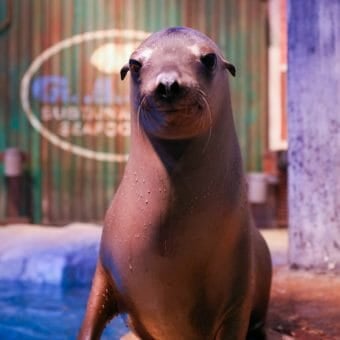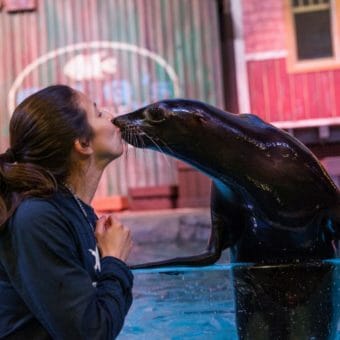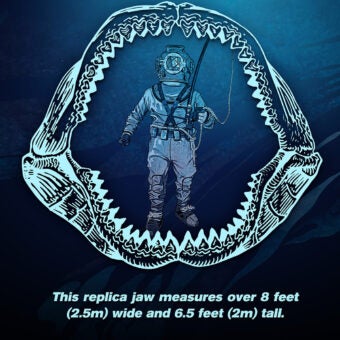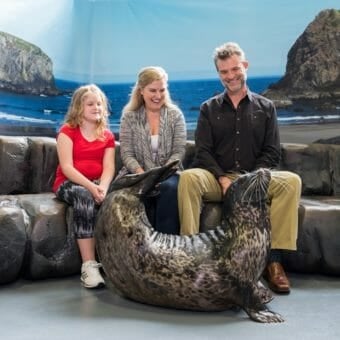-
Size
8 inches (20 cm) -
Diet
Benthic invertebrates -
Range
Western Pacific Ocean -
Habitat
Rocky shores, coral reefs, estuaries and on silty inner reefs
Physical Characteristics
- Readily identifiable by its distinctive coloration and long snout.
- The body is silvery-white with three broad vertical, orange to copper-colored bars. A narrower copper bar on the head passes through the eye.
- Black spot at the base of the second dorsal fin and a thin black bar on the caudal peduncle.
- Grows up to 8 inches (20 cm) in length.
Animal Fact
The copperband butterflyfish is found primarily in shallow water.
Diet / Feeding
- Diet consists primarily of benthic invertebrates.
- Sometimes used to control Aiptasia, a common nuisance anemone species, in aquariums.
Range / Habitat
- Occurs in the Western Pacific from the Andaman Sea to the Ryukyu Islands and Australia.
- Found along rocky shores, coral reefs, estuaries and on silty inner reefs.
- This species is common on coral reefs.
- Its preferred depth range is 3-82 feet (1-25 m).
Reproduction & Growth
- Forms pairs during breeding and is believed to be monogamous.
- Larval and juvenile stages have similar markings to adults but lack a long snout.
Conservation Status
- “Least Concern” on the IUCN Red List.
Additional Information
- Encountered singly or in pairs.
- Life span is about 10 years.
- The long snout is an adaptation for feeding on benthic invertebrates in crevices and holes.
- Considered difficult to keep in a home aquarium.
- Other common names include “beaked coralfish” and “copper-banded butterflyfish.”
Sources
- A Guide to Angelfishes & Butterflyfishes. Allen, G.; Steene, R. and Allen, M., pgs. 176
- http://australianmuseum.net.au/Beaked-coralfish-Chelmon-rostratusl-Linneaus-1758
- www.fishbase.org
- www.discoverlife.org

